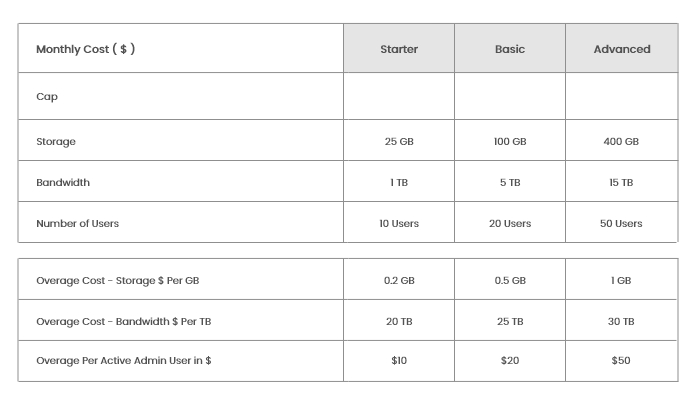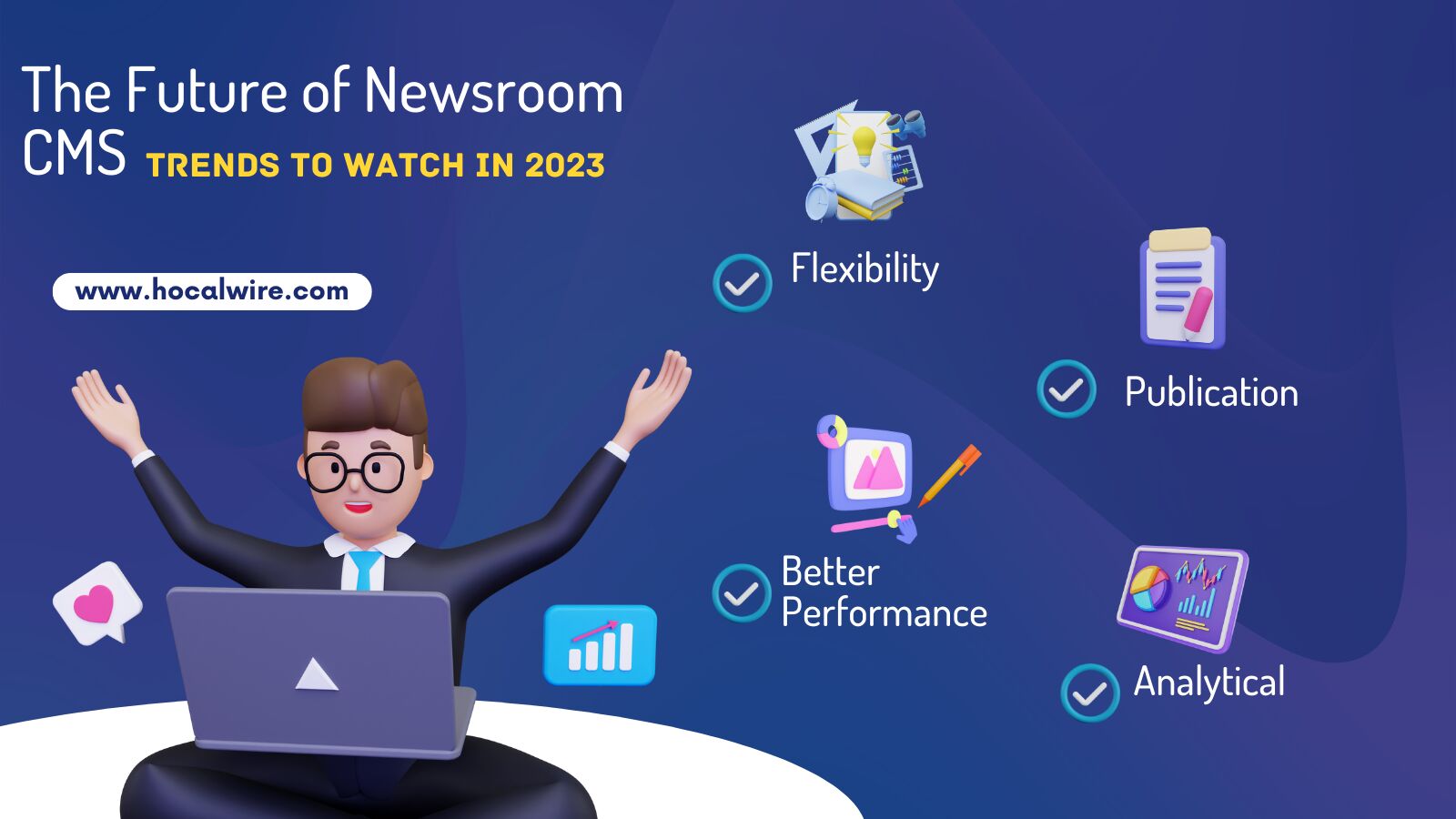



Trends To Watch in Newsrooms: Headless CMS - Concept, Advantages & Disadvantages
A headless CMS that can publish content to multiple channels and devices via API endpoints. The front end that renders content is decoupled from the back end where content is created, managed, and stored.
Effectively managing online content is essential for businesses and individuals in today's fast-paced digital world. The process may be streamlined, productivity can be increased, and a consistent user experience can be delivered with the help of a reliable and potent Content Management System (CMS). This blog post will go over the benefits and features of what is perhaps the best CMS ever. Join us as we explore how this CMS raises the bar for website management by making it simple for users to build, maintain, and update their websites.
The advancing technology and multimedia platforms that are influencing how people consume and engage with news are directly related to the future of newsrooms. The future of journalism is examined in this essay together with the newest developments in multimedia platforms and newsroom technology.
What is a Headless CMS
Before learning why our newsroom requires a CMS, it is important to have a basic idea of what a headless CMS is and how it aids in managing content and websites. A headless CMS, sometimes referred to as headless software or a headless system, is any type of back-end content management system where the content repository, the "body," is isolated from the presentation layer, the "head." In reality, a headless CMS allows you to control content from a single location while distributing it to any front end of your choice. Multichannel projects must be able to link material into any system, piece of software, or website by merely contacting the APIs the headless CMS exposes.
1. One unified CMS for multiple devices and publication formats
2. Quicker data rendering and audience distribution, which improves user experience
3. Server operation, maintenance, and development costs are lower than with a conventional system.
4. Improved productivity, efficient content management and distribution
5. No dependency on technical expertise to publish content, it's a one-time installation and configuration cost All these benefits lead to improved metrics in terms of audience, monetisation, traffic, sponsorship and page ranking which leads to a direct impact on revenue.
What are the advantages of using a headless CMS?
A headless CMS is a content management system that can publish content to multiple channels and devices via API endpoints. Unlike traditional CMSs, the front end that renders content is decoupled from the back end where content is created, managed, and stored.
1. Flexibility to integrate with other systems
Choosing a CMS is a customizable experience that depends on a combination of web architecture, a team’s technical capabilities, and company goals for the website. Choosing a CMS is a personalised process that is influenced by web architecture, a team's technical capabilities, and the company's website goals. What's amazing about being headless is that the backend, not the presentation layer, is in charge. Because a headless CMS allows content to be pushed to any presentation layer, you can connect with whichever frontend framework works best for you and your team. This method also allows you to draw data from other systems, reducing the effort required to move to other frontend (or backend) systems in the future.
2. Security with Headless CMS
In this digital age, security is a CMS's primary concern. The security layer can be concealed in a number of ways in a headless CMS because it is independent of the user levels. As a result, the administrator may rest easy knowing that the system is safe and secure.
3. Seamless Design Customization
The finest CMS ever excels at design customization, offering users a large selection of pre-designed templates and themes from which to pick. These designs are extremely customizable, allowing customers to tailor their websites to their brand's identity.
The CMS also has a drag-and-drop interface, allowing users to build unique layouts and designs without requiring any coding experience. Users may simply change fonts, colours, backgrounds, and other graphic aspects to create a visually appealing website that represents their personal style. Additionally, the CMS offers responsive design, which ensures that websites appear amazing on a wide range of devices, including smartphones and tablets. Given the growing popularity of mobile devices, this functionality is critical for providing a consistent user experience across all platforms.
Future-proof content- Future-proof content is organised and portable, making it simple to modify.
Scalable-There are no concerns about load balancing, caching, database clustering or replication.
4. Future-proof development
It takes no time for a platform to become outdated, so going headless offers more scalability. By having your frontend and backends separated, your team has the freedom to rebrand content, update campaigns, restructure content, or even move platforms seamlessly without massive refactoring.
5. Faster Load Times
This allows for faster website load times because the front-end technology used can be optimized specifically for that purpose.
6. Better SEO
This allows for better SEO because the front end can be optimized specifically for search engines.
What are the Disadvantages of using a headless CMS?
1. More Complex Implementation
Implementing a headless CMS requires additional front-end development effort and API integrations, which can complicate and lengthen the development process.
2. Higher Development Costs
Building a website with a headless CMS can be more expensive due to the additional development work required.
Overall, headless CMS offers several advantages and disadvantages that developers should consider when choosing the best CMS for their website.
While it may not be the best option for every website, headless CMS provides greater flexibility, easier maintenance, faster load times, and better scalability for those willing to invest the time and resources required to implement it properly.
How Hocalwire Also Supports
Hocalwire is an Automation & CMS Platform that enables publishers and newsrooms to produce content easily. It uniquely stands out as an all-in-one tool for reporters and journalists to focus more on writing while the CMS takes care of all the hard work involved in the publishing process. The platform features numerous integrations for editing, analytics, SEO, and optimisation. Hocalwire CMS enables its users to produce content for 30% less money while reaching 100% more readers, 200% more SEO-targeted users, and 400% faster load times. The technique makes the news visible in Google News and search results, increasing traffic and profits.
Hocalwire's features include:
- The Hocalwire CMS enables journalists to work together, evaluate, and edit content, establishing a publishing pipeline.
- Has social media sharing and personalisation capabilities built in to promote tales.
- Drive more value for an audience with content analysis and sentiment analysis
- Publish AMP Stories and create lightweight web pages for each story.
- The ability to track author metrics, submit a narrative for evaluation, and publish in the production process.
- The platform supports the localisation of content written in regional languages and for the audience in different demography.
- Create URLs, Meta Tags, Keywords, Subheadings, and Title Tags that will help web crawlers rank your posts higher.
Book a Demo to try out your product and get a guided explanation.
Why does the CMS architecture matter?
The first thing you should keep in mind while searching for the ideal CMS is to avoid rebuilding it annually. The greatest action is to comprehend what the industry is trying to sell you. Your CMS serves as the cornerstone of all of your digital endeavours.
A CMS that is evolving and desirable will have long-lasting benefits and provide a success blueprint.
- Simple to update
- Options that can be modified and integrations
- Security
- Scalability
- Budget
- User Engagement
- Conclusion
The correct CMS may ease your workload by performing steps automatically, assisting you in managing content. Don't forget to develop or find a front-end. You can book a free demo here to learn more about how a headless CMS might benefit you.

